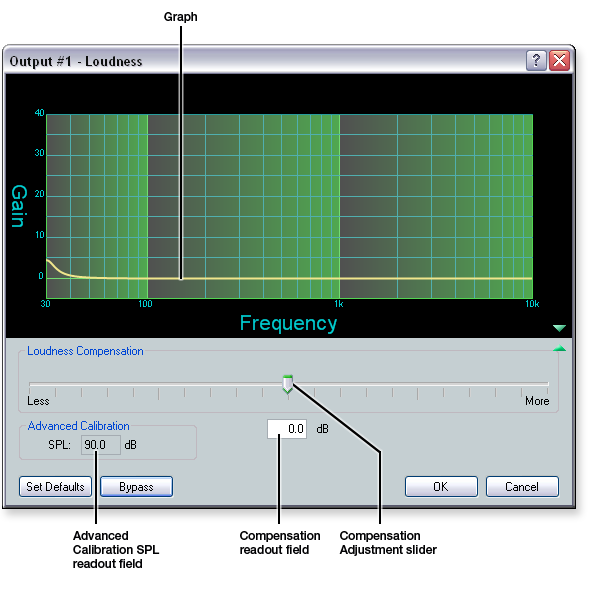

The Loudness processor applies a filter compensation curve to the signal in an inverse relationship to the output volume (the higher the output volume, the less compensation that is applied). You can fine-tune the amount of loudness compensation using the Compensation Adjustment slider and making adjustments "by ear," or by measuring SPL levels in a particular room and using the slider to adjust the loudness filter relative to the SPL (Sound Pressure Level) of the room and system gain structure.
There are two places in the signal chain where a Loudness processor can be applied: the output path or the virtual return path. On the output path, both the output volume and the post-mixer gain affect the loudness compensation curve. On the virtual path return, the pre-mixer gain affects the loudness compensation curve.
See the Loudness Calibration section for more information.

To adjust the loudness settings, double-click the LOUD block. The Loudness dialog box opens. See the Loudness Dialog Box Components subsection below for information about the settings that are available in the dialog. See the Loudness Calibration section for information about calibrating the loudness that you inserted into the signal chain.

The Loudness dialog contains the following components:
Loudness Compensation Adjustment slider — From a center zero-point (0 dB), click and drag the slider to the left to adjust for less compensation (filter curve is reduced), or to the right for more compensation (filter curve is increased). The slider position is translated into a dB value that is displayed in the compensation readout field (see image below).
When less compensation is applied (the slider is moved to the left), it compensates for more perceived loudness, therefore the dB value increases as less compensation is applied. The opposite is true for adding more compensation. With the center point being 0 dB, the slider range is from +24 dB (full left) to -24 dB (full right).
